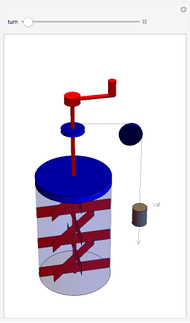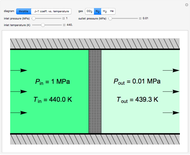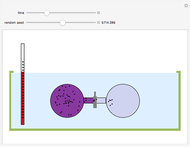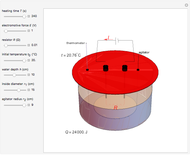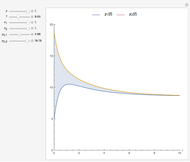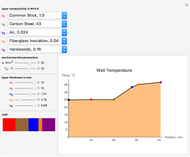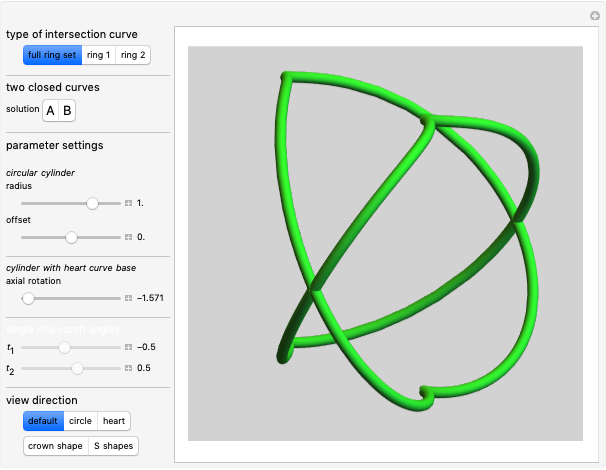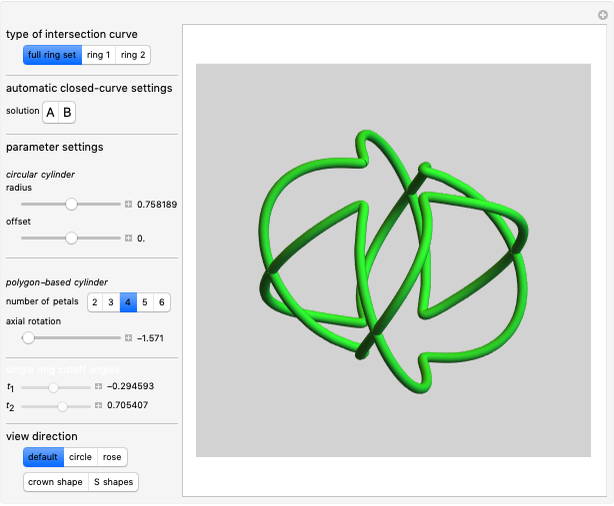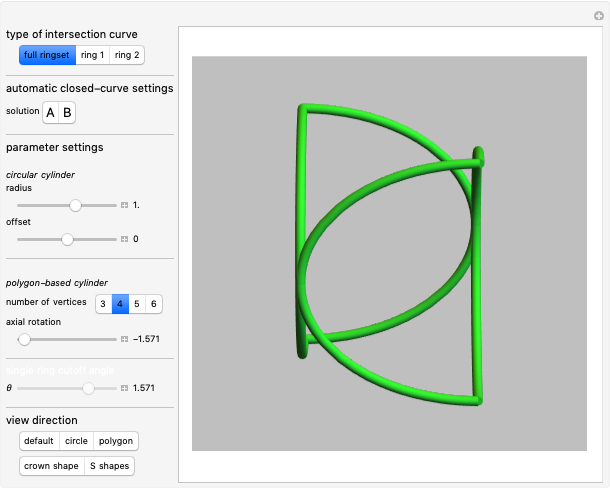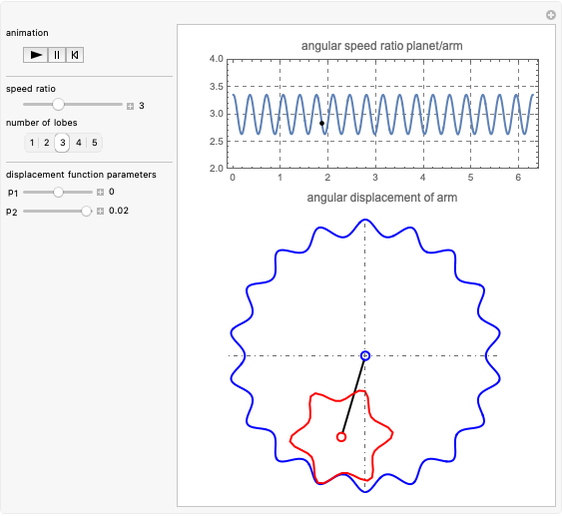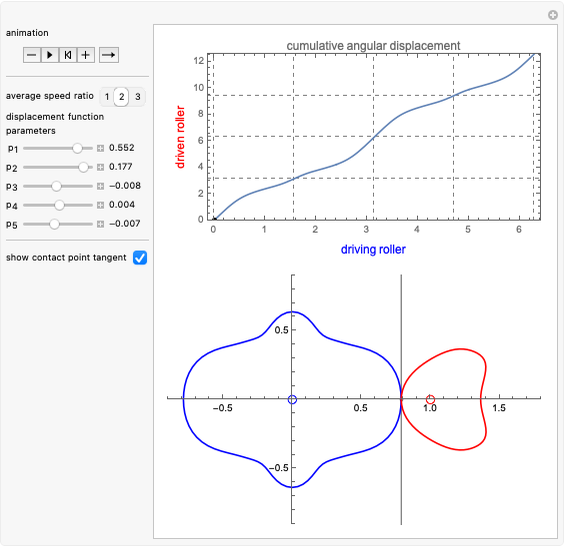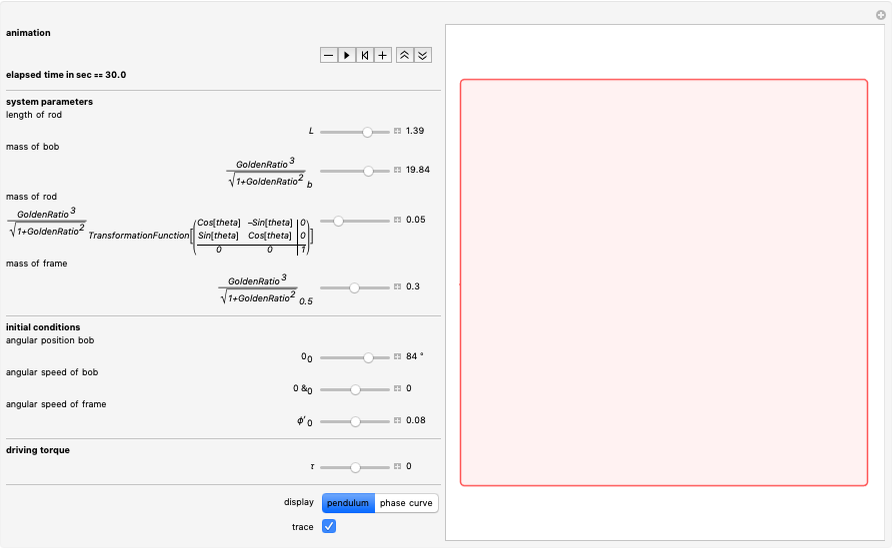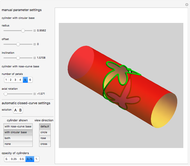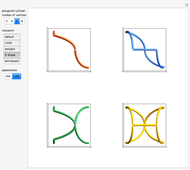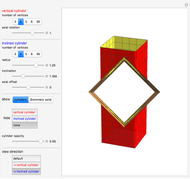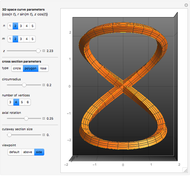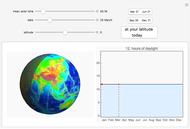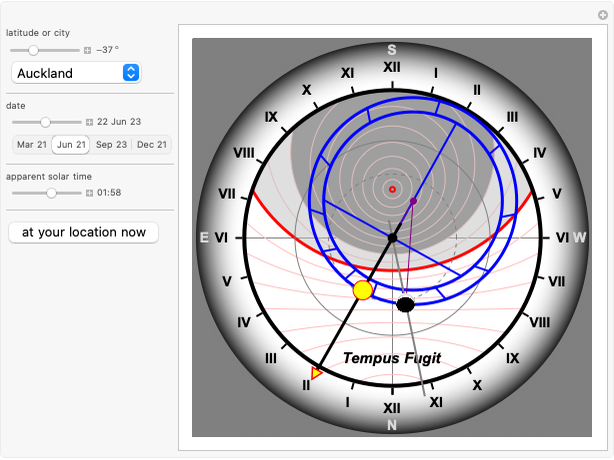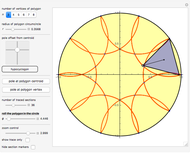Joule Wire Heater

Requires a Wolfram Notebook System
Interact on desktop, mobile and cloud with the free Wolfram Player or other Wolfram Language products.
Steel wire can be heated by passing an electric current through it. In practice, this can be achieved by running the wire over two rollers to which an electric potential is applied. This is an application of Joule's first law: the heat (energy) produced is proportional to the square of the current multiplied by the electrical resistance of the wire,  . This heat, minus the energy loss due to radiation, produces a temperature rise in the wire.
. This heat, minus the energy loss due to radiation, produces a temperature rise in the wire.
Contributed by: Erik Mahieu (November 2011)
Open content licensed under CC BY-NC-SA
Snapshots
Details
The temperature at the second roller (the exit) can be calculated by solving the differential equation representing the energy equilibrium of the system:
 ,
,
where
 is the temperature coefficient of resistivity of steel: .005
is the temperature coefficient of resistivity of steel: .005  ,
,
 is the specific heat of steel: 0.45
is the specific heat of steel: 0.45  ,
,
 is the Stefan–Boltzmann constant: 5.670373
is the Stefan–Boltzmann constant: 5.670373 


 ,
,
 is the density of steel: 7.9
is the density of steel: 7.9 

 ,
,
 is the specific resistivity of steel: 1.7
is the specific resistivity of steel: 1.7 
 ,
,
The three snapshots illustrate how the same temperature can be reached with different combinations of current speed. Which one to use is determined by economic considerations.
Permanent Citation








